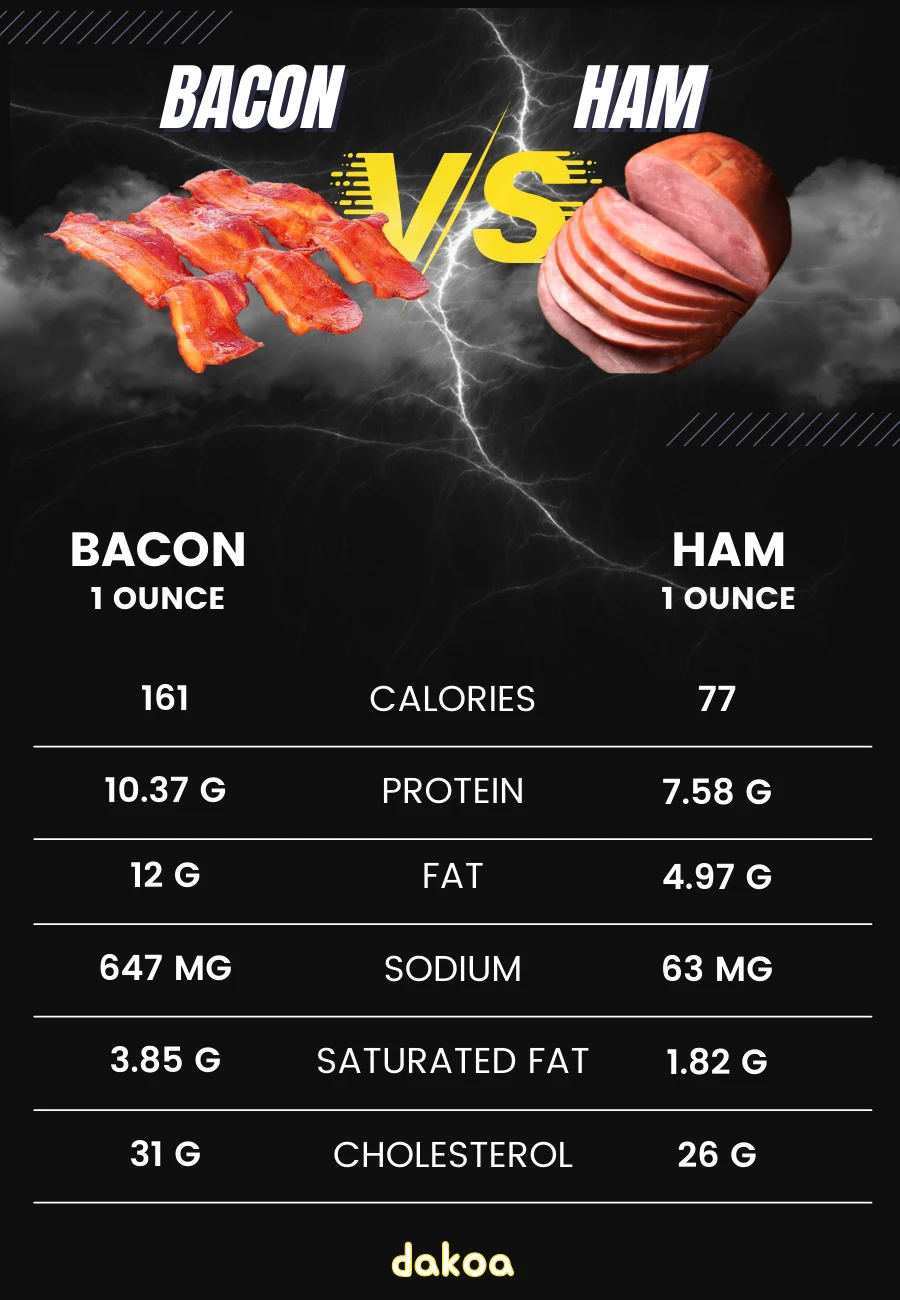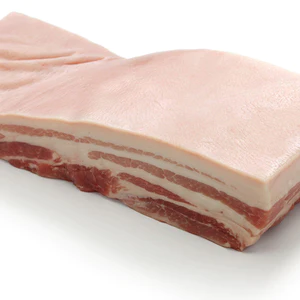The Clever Rebranding Of The Pork Byproduct No One Wanted
Most of us can agree that everything is better with bacon.
And why wouldn’t it be?
It’s the perfect combination of animal fat and salt, resulting in a flavor so iconically American, that we spend over $9 billion on it every year in this country.
Before we go any further, I must ask you to set aside your preconceived ideas of bacon.
Pretend you’ve never experienced your taste buds reacting to the sound of bacon sizzling in a hot skillet.
Ignore the fact that nearly every fast food place and restaurant in this country offers you the opportunity to add bacon to almost anything for a slight upcharge.
Pretend you’ve never heard of it before.
Since you’ve never heard of bacon before, you’re probably wondering why on Earth would anyone think of taking one of the least appetizing and cheapest areas of the pig and slicing it super thin, frying it up in a pan, and consuming it.
What a strange concept.
But all strange concepts have oftentimes, very strategic, origin stories.

The only reason bacon became a pop culture icon intertwined throughout America, is that the pork industry waged a massive marketing campaign, to convince Americans to salivate and consume pig parts they couldn’t otherwise sell and to cover up the health risks.
After all, who wants to eat THAT.
I’m not going to call this a Big Pork Conspiracy, instead I’ll call it what it was, Big Pork Marketing Run Amok. Think along the lines of the tobacco industry.
Before you stop reading and decide that I’m a conspiracy theory wingnut because, of course, no one really cares that bacon isn’t entirely healthy, let me give you a quick history lesson.
Sure, today no one cares much, but 40 years ago, the pork industry couldn’t pay even the poorest of consumer to eat their unhealthiest cuts of meat. The leaner, healthier, portions of the pig such as the tenderloin they couldn’t keep on the shelves.
The public couldn’t get enough of the other white meat.
Bacon was so well known as being extremely unhealthy, it was considered a once a year high-caloric, high-fat, splurge. Of course, that didn’t exactly help sales of the pork belly parts the industry had in great abundance.
To uncover their solution, we must go back to the early 1980s. Aerobics were all the rage, the Brat Pack dominated the magazines (yes, there were still many printed magazines to choose from), and the golden age of romantic comedies had begun.
The pork board couldn’t figure out how to sell the largest part of the pig, that high-cholesterol, fat filled pork belly. No one wanted it.
The pork board knew it had to change the way the public saw the fat-encrusted belly and to do that, they needed to change the visual.
So they used thin strips that were more appealing and hide the original source.
You see, until that moment, Americans knew bacon only as large cuts of fat that were then fried and consumed about once a year. Very different from today’s view of bacon. These were not strips back in those days!
To solve their big fat problem, the pork board appealed to the fast food industry for insight. They teamed up and began marketing thin strips of bacon on the all American staple, the cheeseburger.

They Wouldn't Touch It!
The pork belly at the left is what all Americans thought of when one said the word "bacon" before 1990. It was considered unhealthy, fatty, cheap, and a byproduct best served to the very poor or animals.
The Real Origin Story of Bacon Begins Poolside in Florida
So who actually had this marketing brainstorm? Well, in the early 1990s, the pork board’s national marketing manager was enjoying a drink by the pool in Orlando, Florida with Bob Autry, the president of Hardee’s.
“What the hell am I going to do with all this pork belly no one wants to eat?”
I imagine the pork board’s marketing manager asked (and vented simultaneously).
“Make them want it!” Autry took it as a challenge, the ultimate rebranding. He devised a brilliant marketing maneuver to create a sandwich so unhealthy that actual grease drips down the chin, and yet is desired by nearly every American.
Right there, poolside in Orlando, the Frisco Burger was born.
A sinfully unhealthy burger with double the calories of nearly every other fast food burger at the time, piled high with melted Swiss cheese, sizzling bacon, sliced tomatoes and enough mayonnaise to drown a small pet in.
Original Frisco Burger Commercial
The following commercial premiered in 1992. It was the first time audiences saw the new version of bacon – thin strips.
The burger was a hit and almost overnight, the unpalatable fatty portions of the pig were transformed in the perception of every American.
Now, bacon was a must-have. It wasn’t just a previously undesirable food, considered to be beneath most of the population. Now it was a crucial part of a delicious meal.
Of course, it wasn’t long before other fast food chains got in on the newly-created bacon craze.
Every major chain released their own version of “ode to greasy animal fat”.
Commercials were now using bacon, for the first time ever, to market everything from sandwiches to salads with bacon strips, bacon jam, and bacon crumbles.
Skip forward a couple of decades and now that we’ve been told by media outlets and highly-organized merchandising campaigns (typically paid for by the pork board) that bacon is epic and American, we’ve absorbed it and altered our sense of food history and time.
Most of us truly believe bacon has been served in thin strips in quantity in this country for a century, and that’s simply not true.
Bacon as we know it and consume it today was invented in the early 1990s by a marketing wizard.
But the pork industry won’t give up their golden goose without a fight.
Have you ever noticed whenever people begin to focus more on health or eating less animal fats, suddenly you start hearing more about Atkins or Keto and see memes depicting how epic and legendary bacon is.
That’s the pork industry marketing machine hard at work!
And you have to give credit where it’s earned. They turned bacon into a pop culture phenomenon.
There’s bacon cupcakes, bacon baked in bars, bacon candles, and even bacon lip balm. It never ends, and they spend whatever it takes to ensure that it won’t. The pork industry has become a lobbying and marketing powerhouse.
In fact, in 2008, 7 out of every million baby boys were actually named Bacon. And now, we have influencers who have built up their online persona around liking bacon.
At this point, you have to give the industry credit for pulling off one of the largest and most successful rebrands in history, right up there with Sea bass or King Crab.
But there’s a darker side.
While they were convincing us all to eat our weight in bacon each year, they neglected to mention that bacon can cause cancer.
More To Discover

That’s not an opinion.
There’s overwhelming evidence that consuming processed meats like bacon increases your risk of cancer.
Health groups even ranked them a Group One Known Carcinogen, meaning if you consume just one club sandwich a day, estimates show it increases your risk of colorectal cancer by 20%.
Of course, processed meats that are high in salt (bacon being at the top), have also been linked in multiple studies to higher rates of obesity, diabetes, and heart disease.
Of course, Big Meat is fighting to make sure you don’t hear about that very much. Or when you do, they’re working hard to make sure you’re distracted enough not to pay attention or to simply shrug it off.
The pork and beef industries have known since the early 1970s that their food poses a serious health concern.
But they bullied the USDA and Department of Health and Human Services into downplaying the risks.
And in 1977 the two industries were essentially allowed to make their own line edits to the US Dietary Guidelines.
The chairman of the National Cattlemen’s Association even pressured them into removing any reference to the health benefits of decreasing meat consumption.
And when the US was gearing up to write the 2015 Dietary Guidelines, the meat industry spent $10.8 million in contributions to political campaigns and another $6.9 million on lobbying.
So not only was our love of bacon entirely manufactured by a well-organized partnership between the pork board and fast food that managed to normalize a well-known carcinogen, but they’re spending millions every year to keep the con going, at the risk of our health.
And that is the true history and dirty (but tasty) saga of bacon.



















